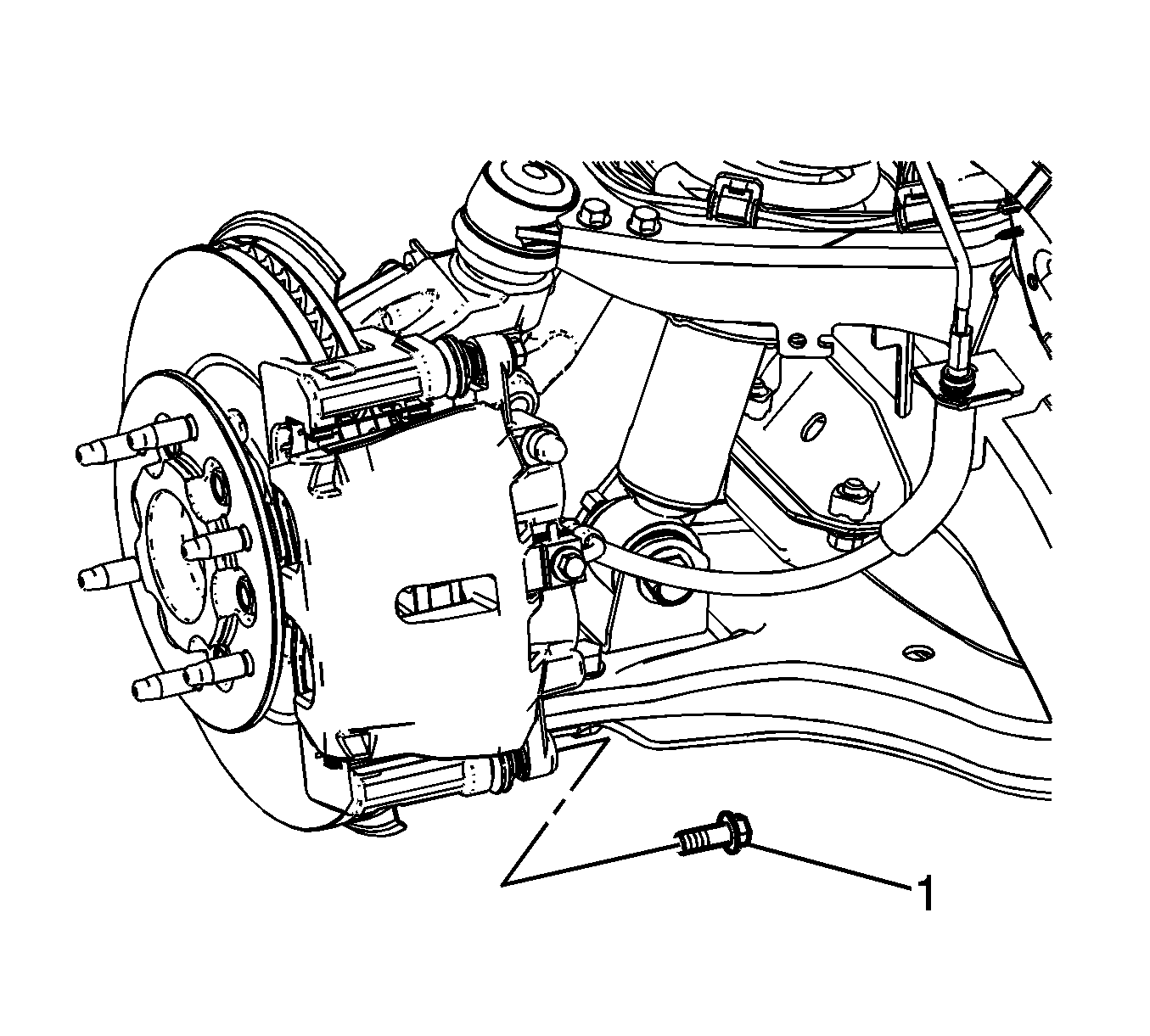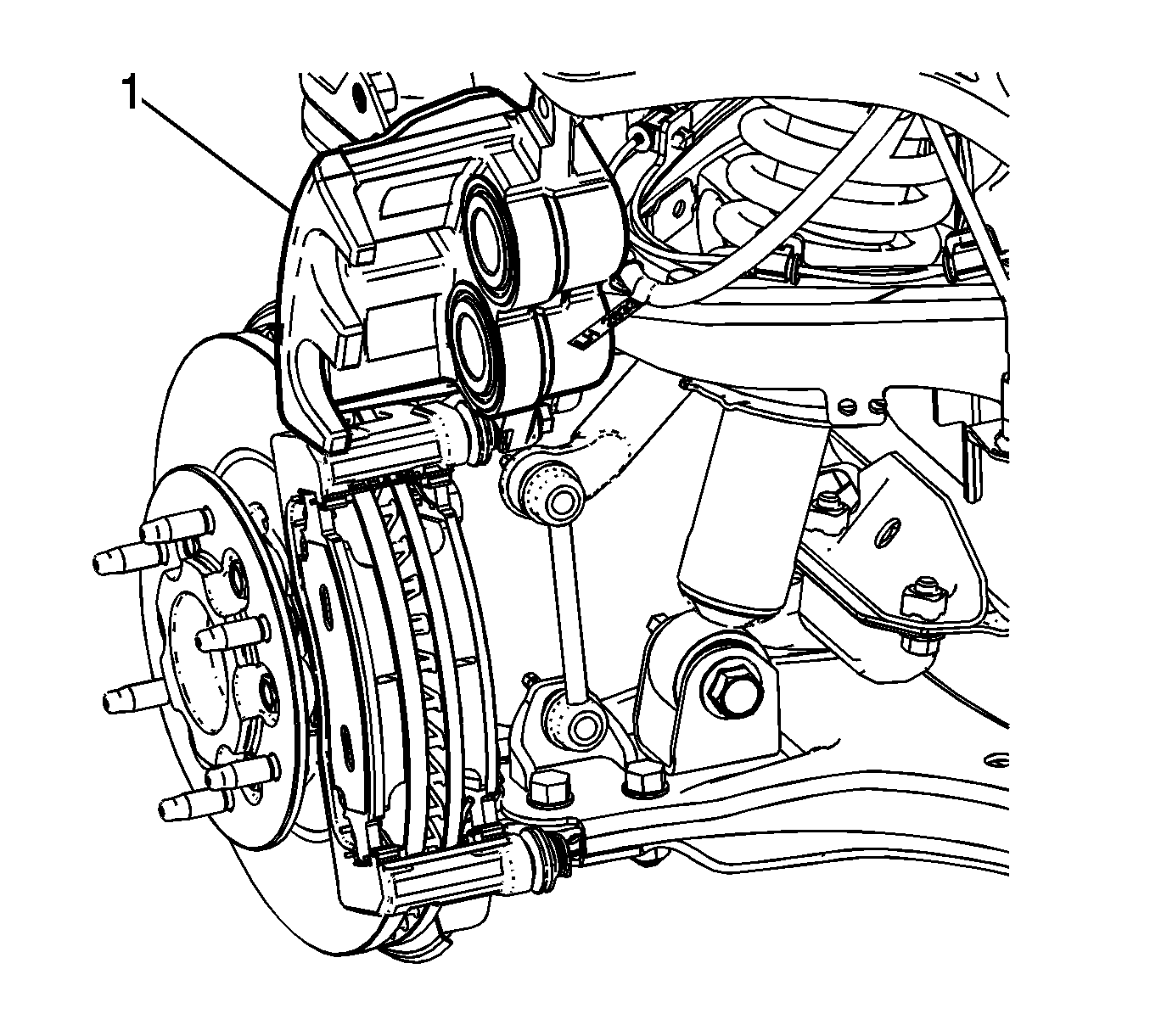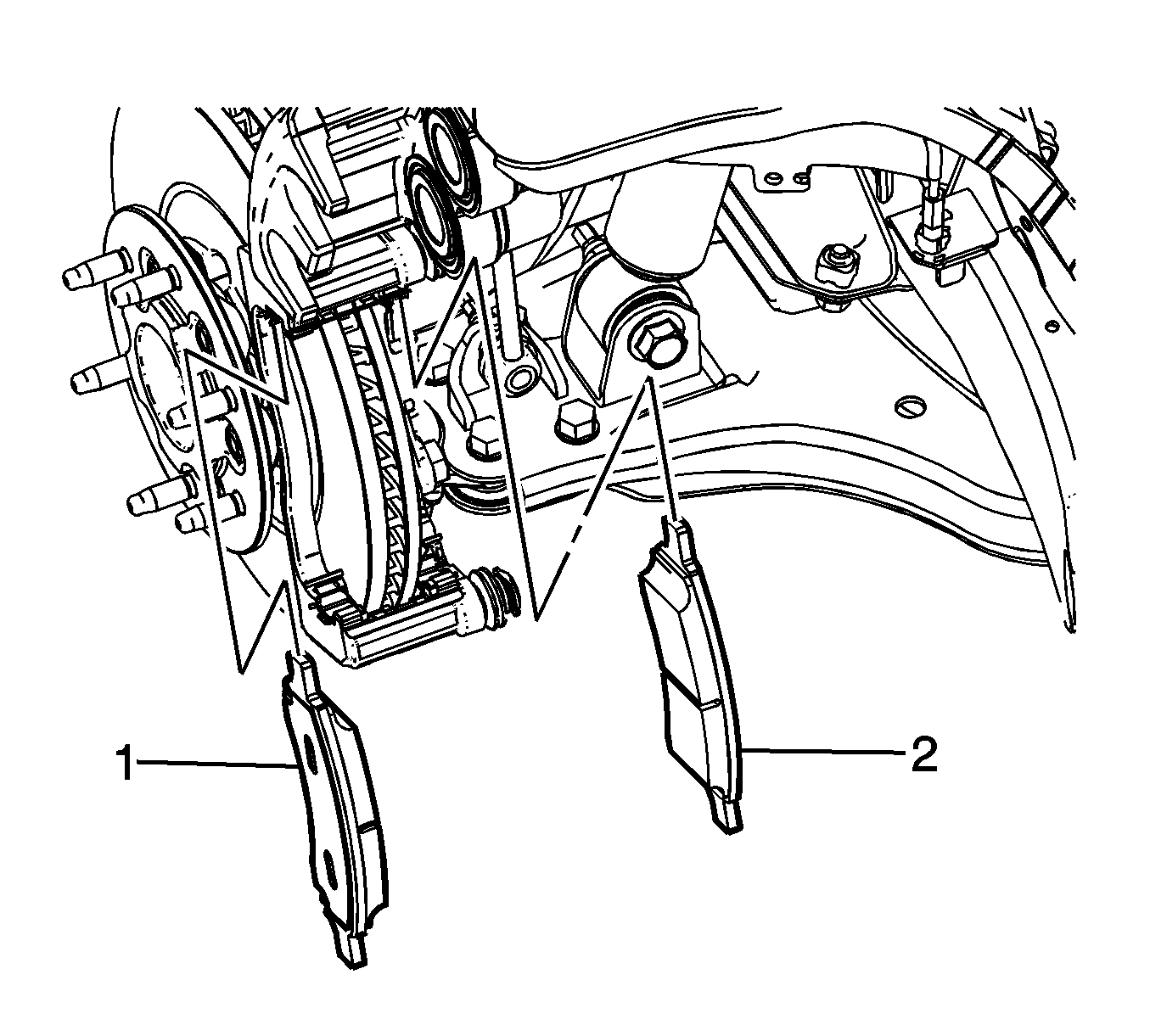Removal Procedure
Warning: Refer to Brake Dust Warning in the Preface section.
- Inspect the fluid level in the master cylinder reservoir.
- If the brake fluid is midway between the maximum full point and the minimum allowable level, no brake fluid needs to be removed from the reservoir before proceeding.
- If the brake fluid is higher than midway between the maximum full point and the minimum allowable level, remove brake fluid to the midway point before proceeding.
- Raise and support the vehicle. Refer to Lifting and Jacking the Vehicle.
- Remove the tire and wheel assembly. Refer to Tire and Wheel Removal and Installation.
- Install a large C-clamp over the body of the brake caliper with the C-clamp ends against the rear of the caliper body and against the outboard brake pad.
- Tighten the C-clamp evenly until the caliper pistons are compressed into the caliper bore.
- Remove the lower brake caliper guide pin bolt (1).
- Pivot the brake caliper (1) upward and support with heavy mechanics wire or equivalent.
- Remove the outer brake pad (1).
- Remove the inner brake pad. (2).
- If installing new disc brake pads, remove and discard the brake pad shims (1).
- Thoroughly clean the brake caliper bracket mating surfaces and, if reusing the brake pads, clean the brake pad shims with denatured alcohol and allow to dry.

Caution: Support the brake caliper with heavy mechanic wire, or equivalent, whenever it is separated from its mount and the hydraulic flexible brake hose is still connected. Failure to support the caliper in this manner will cause the flexible brake hose to bear the weight of the caliper, which may cause damage to the brake hose and in turn may cause a brake fluid leak.



Installation Procedure
- If installing new disc brake pads, install new brake pad shims (1).
- Install the outer brake pad (1).
- Install the inner brake pad. (2).
- Pivot the brake caliper (1) downward and position to the brake caliper bracket.
- Install the lower brake caliper guide pin bolt (1) and tighten to 64 N·m (47 lb ft).
- Install the tire and wheel assembly. Refer to Tire and Wheel Removal and Installation.
- Lower the vehicle.
- With the engine OFF, gradually apply the brake pedal approximately 2/3 of its travel distance.
- Slowly release the brake pedal.
- Wait 15 seconds then repeat steps 8-9 until a firm brake pedal is obtained. This will properly seat the brake caliper pistons and the brake pads.
- Fill the master cylinder reservoir to the proper level. Refer to Master Cylinder Reservoir Filling.
- Burnish the brake pads and rotors. Refer to Brake Pad and Rotor Burnishing.


Caution: Support the brake caliper with heavy mechanic wire, or equivalent, whenever it is separated from its mount and the hydraulic flexible brake hose is still connected. Failure to support the caliper in this manner will cause the flexible brake hose to bear the weight of the caliper, which may cause damage to the brake hose and in turn may cause a brake fluid leak.

Caution: Refer to Fastener Caution in the Preface section.

